2005
http://moola3.pixnet.net/album/set/15706878
2016
http://moola3.pixnet.net/album/set/15706848
第一次前往廬山溫泉 是在2005年
當時開車走蘇花 北宜 高速公路 台14線
風塵僕僕 開了近9小時車程才抵達
當年入住 闔家溫泉會館
http://moola3.pixnet.net/album/set/15694470
當年 廬山溫泉區 車多 人多
有2-3家便利商店 有小吃街 好不熱鬧
這10年來 廬山溫泉經過風風雨雨
先後經過颱風肆虐 飯店倒塌 河川暴漲
已經進入公告廢止狀態
https://goo.gl/n04Ii8
------
2008年9月12日,辛樂克颱風重創廬山溫泉,多家飯店嚴重毀損
2012年5月31日,南投縣政府公告廢止廬山溫泉區
2016年8月,南投縣政府預計花兩年的時間,
開發福興農場為溫泉區,安置原廬山溫泉業者
------
拆遷的風風雨雨 業者也各有苦衷
終成難題
https://youtu.be/Z3u3VRPNL-M
https://youtu.be/VtPvRM9aVUQ
那時候覺得人多有些髒亂 但至少有商機 還有整建希望
2016年的最後兩天 我選擇回到廬山溫泉
一方面 這裡是當年我跟老婆 第一次出遠門旅遊的地方
一方面 為這個地區 再做一些最後的紀錄
進入廬山地區 當年因應大量車輛的公有停車塔
2005年時還在建築 2016年底已經廢棄封閉
進入溫泉區 這一次選擇在 蜜月館大飯店入住
http://moola3.pixnet.net/album/set/15706725
入口區就有停車場可以先停車 不過即使是連假前
也是稀稀疏疏少許車輛
在這邊最顯眼的就是 名廬大飯店
這些年來也一直屹立不搖
只是沿路上大排長龍的車輛 也不復見
一路向內走 夏都飯店 依舊
吊橋前的全家以及萊爾富便利商店都收了
吊橋旁的櫻花麻糬依舊 少了人群
當年寫說有點囂張的店家 現在倒是客氣不少
走過吊橋 在河岸邊的松田溫泉會館
已經變成廢墟
http://blog.yam.com/ThinkingAloud/article/57409764
過了吊橋 往右下方斜坡看去
美麗的公園不復見 河堤加高許多
一旁的碧樺大飯店
2005年還顯老態 後來花大錢改裝
媲美台中地區汽車旅館高檔設施
也敵不過大水來臨 已經停業
留下高聳的大門以及城牆
http://www.twem.idv.tw/3/9/2/b51.htm
http://blog.xuite.net/hungmaofeng/twblog/146119802
http://a711217.pixnet.net/blog/post/40049561
溫泉老街上 溫泉鄉餐廳依然健在
也還不錯吃 2005年時是學生 吃不太起的合菜
現在倒是行有餘力的可以點上自己喜歡的菜色
不過溫泉鄉餐廳 對面的小吃街早已歇業
人去樓空 本來已有的7-11連招牌都已消逝
再往上山 沿路 飯店看來有點孤單
還有幾家特產店
一樣努力地在推銷商品
繼續上坡 沿路看見的 天廬大飯店 也已停業
http://www.ettoday.net/news/20121231/147143.htm
http://www.appledaily.com.tw/appledaily/article/headline/20121231/34740508/
http://blog.yam.com/FATBETTY/article/34837101
路接近尾聲 就是我今天入住的 蜜月館大飯店
以及隔壁的 廬山園大飯店
在此要向大家說聲抱歉
會再向大家介紹 蜜月館大飯店
可是他並不是合法旅宿業者
而吊橋沿岸靠溫泉鄉飯店這邊
沿路走來
闔家溫泉會館 屹立不搖
隔壁的 清溪別館 已經歇業
http://www.espring.tw/3/9/2/b47.htm
http://www.twem.idv.tw/3/9/2/b47-1.htm
在一旁的 小境家 則分不清楚是否有在營業
http://jing-jia.mmmtravel.com.tw/?ptype=info
向前經過一座跨過 塔羅灣溪的便橋
記得以前是一座紅色拱橋
http://www.twem.idv.tw/3/9/2/b58.htm
橋邊的上人米 停業
http://www.twem.idv.tw/3/9/2/b92-1.htm
https://www.ptt.cc/bbs/Hotel/M.1267188406.A.3FF.html
碧綠大飯店 本館 停業
http://www.twem.idv.tw/3/9/2/b58.htm
櫻宿 還在努力
http://enss.mmmtravel.com.tw/?ptype=info
廬山賓館只剩下招牌
http://news.ltn.com.tw/news/focus/paper/243248
往後繞去 水悅溫泉會館 還有看見客人
不過晚上整棟建築也是明亮的沒幾間
http://www.crystal-hotel.com.tw/indexx001.asp
最後山邊是 碧綠大飯店 新館
http://www.twem.idv.tw/3/9/2/b58-1.htm
不過停車場已封閉 飯店大廳就像是秘境一般神秘
大致上繞過這幾家飯店 留下紀錄
不僅是不知道下次何時再來
更是不知道曾經美麗的這裡
還會有多少人再來留下記憶
從開始寫 HOTEL分享文章 進入第13年
就是希望有朝一日或許有機會留下些歷史的痕跡
只是這些年來 各大溫泉區
或許年華老去 或許質樸不在
僅以些許照片 紀念我與老婆的年輕歲月
以及在台灣曾經的美好景致
以下是更多關於廬山溫泉的紀錄
**********
收看近10年的 台灣溫泉探勘服務網
http://www.twem.idv.tw/nanto.htm
2014年的網路 廬山溫泉記錄
http://bluehawaii.pixnet.net/blog/post/30232139
http://moola3.pixnet.net/album/set/15706878
2016
http://moola3.pixnet.net/album/set/15706848
第一次前往廬山溫泉 是在2005年
當時開車走蘇花 北宜 高速公路 台14線
風塵僕僕 開了近9小時車程才抵達
當年入住 闔家溫泉會館
http://moola3.pixnet.net/album/set/15694470
當年 廬山溫泉區 車多 人多
有2-3家便利商店 有小吃街 好不熱鬧
這10年來 廬山溫泉經過風風雨雨
先後經過颱風肆虐 飯店倒塌 河川暴漲
已經進入公告廢止狀態
https://goo.gl/n04Ii8
------
2008年9月12日,辛樂克颱風重創廬山溫泉,多家飯店嚴重毀損
2012年5月31日,南投縣政府公告廢止廬山溫泉區
2016年8月,南投縣政府預計花兩年的時間,
開發福興農場為溫泉區,安置原廬山溫泉業者
------
拆遷的風風雨雨 業者也各有苦衷
終成難題
https://youtu.be/Z3u3VRPNL-M
https://youtu.be/VtPvRM9aVUQ
那時候覺得人多有些髒亂 但至少有商機 還有整建希望
2016年的最後兩天 我選擇回到廬山溫泉
一方面 這裡是當年我跟老婆 第一次出遠門旅遊的地方
一方面 為這個地區 再做一些最後的紀錄
進入廬山地區 當年因應大量車輛的公有停車塔
2005年時還在建築 2016年底已經廢棄封閉
進入溫泉區 這一次選擇在 蜜月館大飯店入住
http://moola3.pixnet.net/album/set/15706725
入口區就有停車場可以先停車 不過即使是連假前
也是稀稀疏疏少許車輛
在這邊最顯眼的就是 名廬大飯店
這些年來也一直屹立不搖
只是沿路上大排長龍的車輛 也不復見
一路向內走 夏都飯店 依舊
吊橋前的全家以及萊爾富便利商店都收了
吊橋旁的櫻花麻糬依舊 少了人群
當年寫說有點囂張的店家 現在倒是客氣不少
走過吊橋 在河岸邊的松田溫泉會館
已經變成廢墟
http://blog.yam.com/ThinkingAloud/article/57409764
過了吊橋 往右下方斜坡看去
美麗的公園不復見 河堤加高許多
一旁的碧樺大飯店
2005年還顯老態 後來花大錢改裝
媲美台中地區汽車旅館高檔設施
也敵不過大水來臨 已經停業
留下高聳的大門以及城牆
http://www.twem.idv.tw/3/9/2/b51.htm
http://blog.xuite.net/hungmaofeng/twblog/146119802
http://a711217.pixnet.net/blog/post/40049561
溫泉老街上 溫泉鄉餐廳依然健在
也還不錯吃 2005年時是學生 吃不太起的合菜
現在倒是行有餘力的可以點上自己喜歡的菜色
不過溫泉鄉餐廳 對面的小吃街早已歇業
人去樓空 本來已有的7-11連招牌都已消逝
再往上山 沿路 飯店看來有點孤單
還有幾家特產店
一樣努力地在推銷商品
繼續上坡 沿路看見的 天廬大飯店 也已停業
http://www.ettoday.net/news/20121231/147143.htm
http://www.appledaily.com.tw/appledaily/article/headline/20121231/34740508/
http://blog.yam.com/FATBETTY/article/34837101
路接近尾聲 就是我今天入住的 蜜月館大飯店
以及隔壁的 廬山園大飯店
在此要向大家說聲抱歉
會再向大家介紹 蜜月館大飯店
可是他並不是合法旅宿業者
而吊橋沿岸靠溫泉鄉飯店這邊
沿路走來
闔家溫泉會館 屹立不搖
隔壁的 清溪別館 已經歇業
http://www.espring.tw/3/9/2/b47.htm
http://www.twem.idv.tw/3/9/2/b47-1.htm
在一旁的 小境家 則分不清楚是否有在營業
http://jing-jia.mmmtravel.com.tw/?ptype=info
向前經過一座跨過 塔羅灣溪的便橋
記得以前是一座紅色拱橋
http://www.twem.idv.tw/3/9/2/b58.htm
橋邊的上人米 停業
http://www.twem.idv.tw/3/9/2/b92-1.htm
https://www.ptt.cc/bbs/Hotel/M.1267188406.A.3FF.html
碧綠大飯店 本館 停業
http://www.twem.idv.tw/3/9/2/b58.htm
櫻宿 還在努力
http://enss.mmmtravel.com.tw/?ptype=info
廬山賓館只剩下招牌
http://news.ltn.com.tw/news/focus/paper/243248
往後繞去 水悅溫泉會館 還有看見客人
不過晚上整棟建築也是明亮的沒幾間
http://www.crystal-hotel.com.tw/indexx001.asp
最後山邊是 碧綠大飯店 新館
http://www.twem.idv.tw/3/9/2/b58-1.htm
不過停車場已封閉 飯店大廳就像是秘境一般神秘
大致上繞過這幾家飯店 留下紀錄
不僅是不知道下次何時再來
更是不知道曾經美麗的這裡
還會有多少人再來留下記憶
從開始寫 HOTEL分享文章 進入第13年
就是希望有朝一日或許有機會留下些歷史的痕跡
只是這些年來 各大溫泉區
或許年華老去 或許質樸不在
僅以些許照片 紀念我與老婆的年輕歲月
以及在台灣曾經的美好景致
以下是更多關於廬山溫泉的紀錄
**********
收看近10年的 台灣溫泉探勘服務網
http://www.twem.idv.tw/nanto.htm
2014年的網路 廬山溫泉記錄
http://bluehawaii.pixnet.net/blog/post/30232139
上一頁下一頁
上一頁下一頁
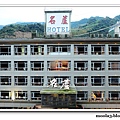
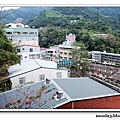
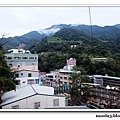
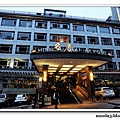
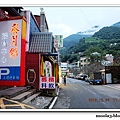
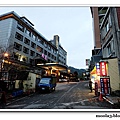
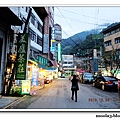
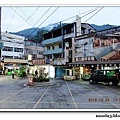
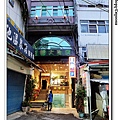
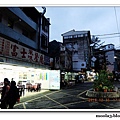
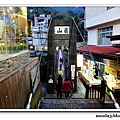
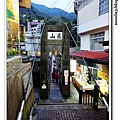
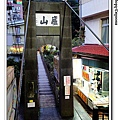
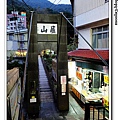
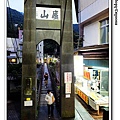


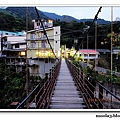
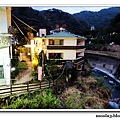
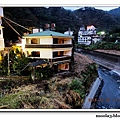
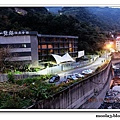
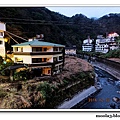

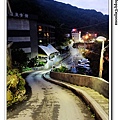

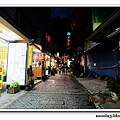

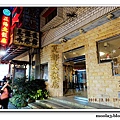
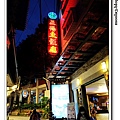
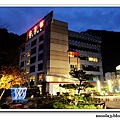
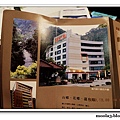

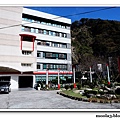

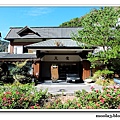
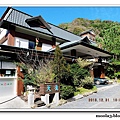
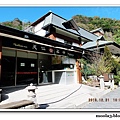
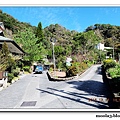
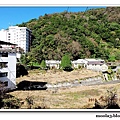
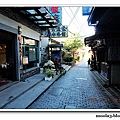
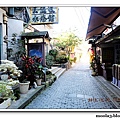
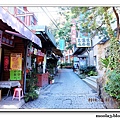
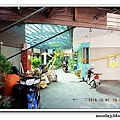
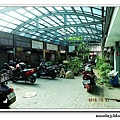
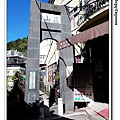
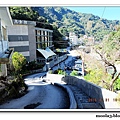
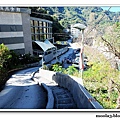
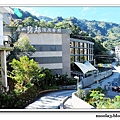
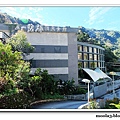
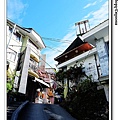
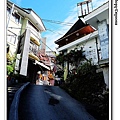
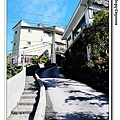
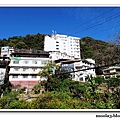
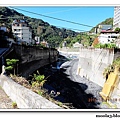
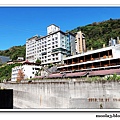
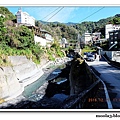
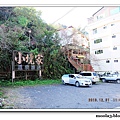
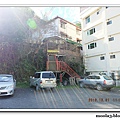


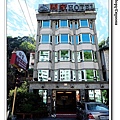
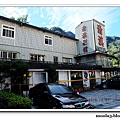
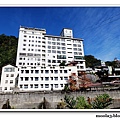
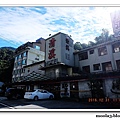
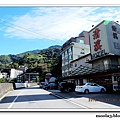
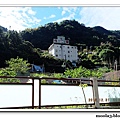
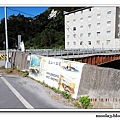
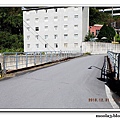

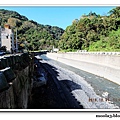
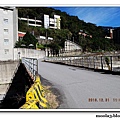
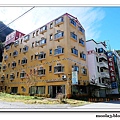
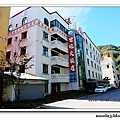
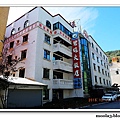
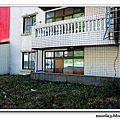
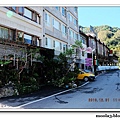
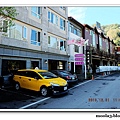
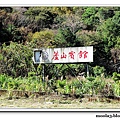
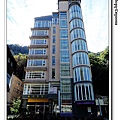





https://en.wikipedia.org/wiki/Path_integral_formulation
弟子規
跳到导航
跳到搜索
弟子規
作者:李毓秀 清
Documentation for the TextInfo template.版本信息
姊妹计划姊妹计划: 百科·语录·数据项
目录
1 總序
2 入則孝
3 出則弟
4 謹
5 信
6 汎愛眾
7 親仁
8 餘力學文
總序
弟子規、聖人訓、首孝弟、次謹信
汎愛眾、而親仁、有餘力、則學文
入則孝
父母呼、應勿緩、父母命、行勿懶
父母教、須敬聽、父母責、須順承
冬則温、夏則凊、晨則省、昏則定
出必告、反必面、居有常、業無變
事雖小、勿擅為、苟擅為、子道虧
物雖小、勿私藏、苟私藏、親心傷
親所好、力為具、親所惡、謹為去
身有傷、貽親憂、德有傷、貽親羞
親愛我、孝何難、親憎我、孝方賢
親有過、諫使更、怡吾色、柔吾聲
諫不入、悅復諫、號泣隨、撻無怨
親有疾、藥先嘗、晝夜侍、不離床
喪三年、常悲咽、居處變、酒肉絕
喪盡禮、祭盡誠、事死者、如事生
出則弟
兄道友、弟道恭、兄弟睦、孝在中
財物輕、怨何生、言語忍、忿自泯
或飲食、或坐走、長者先、幼者後
長呼人、即代叫、人不在、己即到
稱尊長、勿呼名、對尊長、勿見能
路遇長、疾趨揖、長無言、退恭立
騎下馬、乘下車、過猶待、百步餘
長者立、幼勿坐、長者坐、命乃坐
尊長前、聲要低、低不聞、卻非宜
進必趨、退必遲、問起對、視勿移
事諸父、如事父、事諸兄、如事兄
謹
朝起早、夜眠遲、老易至、惜此時
晨必盥、兼漱口、便溺回、輒淨手
冠必正、紐必結、襪與履、俱緊切
置冠服、有定位、勿亂頓、致污穢
衣貴潔、不貴華、上循分、下稱家
對飲食、勿揀擇、食適可、勿過則
年方少、勿飲酒、飲酒醉、最為醜
步從容、立端正、揖深圓、拜恭敬
勿踐閾、勿跛倚、勿箕踞、勿搖髀
緩揭簾、勿有聲、寬轉彎、勿觸棱
執虛器、如執盈、入虛室、如有人
事勿忙、忙多錯、勿畏難、勿輕略
鬥鬧場、絕勿近、邪僻事、絕勿問
將入門、問孰存、將上堂、聲必揚
人問誰、對以名、吾與我、不分明
用人物、須明求、倘不問、即為偷
借人物、及時還、後有急、借不難
信
凡出言、信為先、詐與妄、奚可焉
話說多、不如少、惟其是、勿佞巧
奸巧語、穢污詞、市井氣、切戒之
見未真、勿輕言、知未的、勿輕傳
事非宜、勿輕諾、苟輕諾、進退錯
凡道字、重且舒、勿急疾、勿模糊
彼說長、此說短、不關己、莫閒管
見人善、即思齊、縱去遠、以漸躋
見人惡、即內省、有則改、無加警
唯德學、唯才藝、不如人、當自礪
若衣服、若飲食、不如人、勿生戚
聞過怒、聞譽樂、損友來、益友卻
聞譽恐、聞過欣、直諒士、漸相親
無心非、名為錯、有心非、名為惡
過能改、歸於無、倘揜飾、增一辜
汎愛眾
凡是人、皆須愛、天同覆、地同載
行高者、名自高、人所重、非貌高
才大者、望自大、人所服、非言大
己有能、勿自私、人所能、勿輕訾
勿諂富、勿驕貧、勿厭故、勿喜新
人不閒、勿事攪、人不安、勿話擾
人有短、切莫揭、人有私、切莫說
道人善、即是善、人知之、愈思勉
揚人惡、即是惡、疾之甚、禍且作
善相勸、德皆建、過不規、道兩虧
凡取與、貴分曉、與宜多、取宜少
將加人、先問己、己不欲、即速已
恩欲報、怨欲忘、報怨短、報恩長
待婢僕、身貴端、雖貴端、慈而寬
勢服人、心不然、理服人、方無言
親仁
同是人、類不齊、流俗眾、仁者希
果仁者、人多畏、言不諱、色不媚
能親仁、無限好、德日進、過日少
不親仁、無限害、小人進、百事壞
餘力學文
不力行、但學文、長浮華、成何人
但力行、不學文、任己見、昧理真
讀書法、有三到、心眼口、信皆要
方讀此、勿慕彼、此未終、彼勿起
寬為限、緊用功、工夫到、滯塞通
心有疑、隨札記、就人問、求確義
房室清、牆壁淨、几案潔、筆硯正
墨磨偏、心不端、字不敬、心先病
列典籍、有定處、讀看畢、還原處
雖有急、卷束齊、有缺壞、就補之
非聖書、屏勿視、蔽聰明、壞心志
勿自暴、勿自棄、聖與賢、可馴致
PD-icon.svg 本清朝作品在全世界都屬於公有領域,因為作者逝世已經超過100年。
分类:
李毓秀清朝啟蒙書籍
Two MIT students named 2021 Rhodes Scholars
Danielle Grey-Stewart and Ghadah Alshalan will begin postgraduate studies at Oxford University next fall.
Julia Mongo | Distinguished Fellowships
Publication Date:
November 21, 2020
Press Inquiries
Danielle Grey-Stewart and Ghadah Alshalan
Caption:
Danielle Grey-Stewart, left, and Ghadah Alshalan
Credits:
Photos: Ian MacLellan
Ghadah Alshalan and Danielle Grey-Stewart have been selected for the 2021 cohort of the prestigious Rhodes Scholarship program. They will begin fully funded postgraduate studies at Oxford University in the U.K. next fall. Each year, Rhodes awards 32 scholarships to U.S. citizens in addition to scholarships reserved for non-U.S. citizens.
Grey-Stewart will join the 2021 American Rhodes Scholar class. Ghadah Alshalan was awarded the Rhodes Scholarship for Saudi Arabia.
The students were supported by MIT’s Distinguished Fellowships team in Career Advising and Professional Development. They were also mentored by the Presidential Committee on Distinguished Fellowships. “We could not be more proud of our candidates,” says Professor Tamar Schapiro, who co-chairs the committee along with Professor Will Broadhead. “This year in particular, we are so impressed not only with their accomplishments but also with their resilience. Being interviewed for a Rhodes scholarship is intimidating enough as it is. Doing so remotely is even more challenging. We are thrilled that the spark we see in our students came through, even over Zoom."
Ghadah Alshalan
Senior Ghadah Alshalan, from Riyadh, Saudi Arabia, is a recipient of the Rhodes Scholarship for Saudi Arabia. Alshalan will graduate next June with a bachelor of science in physics and a minor in computer science. As a Rhodes Scholar at Oxford, she will pursue a master’s research program in condensed matter physics.
Physics captivated Alshalan in high school when she participated in national and international physics competitions and became Saudi Arabia’s first female medalist. At MIT, Alshalan has conducted research with Professor Marin Soljačić at the Research Laboratory of Electronics, and Professor Vladan Vuletić at the MIT-Harvard Center for Ultracold Atoms. She is currently developing computational models relevant to quantum nanoelectronics with Professor Pablo Jarillo-Herrero in the Department of Physics. She also did a summer research internship at the University of Hamburg Center for Quantum Technologies in Germany.
Alshalan was president of the MIT Arab Student Organization and has served on committees for the MIT Arab Conference and the MIT Muslim Student Association. She also has been a teaching assistant for the physics department.
The Rhodes Scholarship for Saudi citizens was established in 2018. Up to three scholarships are awarded each year.
Danielle Grey-Stewart
Hailing from Long Island, New York, Danielle Grey-Stewart is a senior majoring in materials science and engineering. As a Rhodes Scholar, she will pursue an MPhil in nature, society, and environmental governance at Oxford University’s School of Geography and the Environment. Grey-Stewart wants to become a leader in science policy with the goal of opening new avenues for fellow scientists of color.
Grey-Stewart is conducting research in the laboratory of Professor Julia Ortony in the Department of Materials Science and Engineering (DSME), focusing on functionalized nanothread synthesis. She has also synthesized photoinitiating nanoparticles in the laboratory of Professor Moungi Bawendi in the Department of Chemistry and worked on biodegradable architectural materials in Professor Neri Oxman’s Mediated Matter group at the MIT Media Lab. Grey-Stewart is the recipient of two National Science Foundation – Research Experience for Undergraduates grants. She was awarded the Horace A. Lubin Award for Outstanding Service to the DMSE Community.
Grey-Stewart chairs the MIT Undergraduate Association Committee on Covid-19. She has written articles on COVID-19’s impact on sustainability for the MIT Environmental Solutions Initiative Rapid Response Group. She is a member of the Student Advisory Group for Engineering, and the MIT School of Engineering’s Diversity, Equity, and Inclusion Committee. Grey-Stewart has taught STEM classes to students in France through MIT Global Teaching Labs. She is an outreach assistant with the Priscilla King Gray Public Service Center and was selected to travel to Navajo Nation to support lasting connections between MIT and Navajo community partners.
Share this news article on:
Twitter
Facebook
LinkedIn
Reddit
Print
Press Mentions
Newsday
Danielle Grey-Stewart speaks with Robert Brodsky of Newsday about receiving a Rhodes Scholarship. “It will allow me to study how environmental policy is formed from the context of how we look at society and nature,” says Grey-Stewart. “It’s really important that when finding engineering solutions, you can connect with communities… and uplift them as equal thought partners in finding solutions to pervasive problems.”
Full story via Newsday →
The Boston Globe
MIT seniors Danielle Grey-Stewart and Ghadah Alshalan have been selected for the 2021 Rhodes Scholarship program, reports Gal Tziperman Lotan for The Boston Globe.
Full story via The Boston Globe →
Related Links
Rhodes Trust
Distinguished Fellowships
Department of Physics
Department of Materials Science and Engineering
School of Science
School of Engineering
Related Topics
Students
Undergraduate
Awards, honors and fellowships
Education, teaching, academics
Physics
DMSE
School of Science
School of Engineering
Guenette Awarded a 2020 Synergy Grant by European Research Council
Prof. Roxanne Guenette, with colleagues Juan José Gómez Cádenas (Donostia International Physics Center) and Fernando P. Cossío (the University of the Basque Country), have been awarded a 2020 Synergy Grant by European Research Council (ERC) for their proposal of a background-free experiment to discover the nature of neutrinos based on single Barium Atom Light Detection.
The grants, €350 million in total, are intended to support scientific projects that address some of the world’s most formidable research problems spanning multiple scientific disciplines. Out of more than 440 submitted proposals, 34 were selected, making this year's application process one of the most competitive in ERC history. These proposals involve 116 researchers who will carry out their projects at 86 universities and research centers in 22 countries across Europe and beyond.
The ERC Synergy Grant scheme is part of the EU's research and innovation program, Horizon 2020, which helps groups of two to four outstanding researchers bring together complementary skills, knowledge and resources in one ambitious project.
The European Research Council, set up by the European Union in 2007, is the premiere European funding organization for excellent frontier research. Every year, it selects and funds the very best, creative researchers of any nationality and age, to run projects based in Europe. The ERC offers four core grant schemes: Starting, Consolidator, Advanced and Synergy Grants. With its additional Proof of Concept grant scheme, the ERC helps grantees to bridge the gap between their pioneering research and early phases of its commercialization.
NEXT White detector
Above: NEXT-White, a high pressure Xenon gas detector [©Javier Larrea]
The European Space Agency formally adopts Ariel, the exoplanet explorer
Research
The European Space Agency (ESA) have formally adopted Ariel, the first mission dedicated to study the nature, formation and evolution of exoplanets.
More than 50 institutes from 17 countries, including the University of Oxford, have been working over the past five years to develop the science goals and design the instrumentation which will enable Ariel to survey a diverse sample of around 1000 planets outside our own solar system.
Professor Neil Bowles, from the Department of Physics, said: ‘The team in Oxford have been involved with the Ariel mission since it was originally proposed in 2014 and it’s fantastic to see it progress to mission adoption. Our team is working closely with our colleagues at RAL Space and University of Lisbon, Portugal, to develop the optical ground test equipment, allowing the Ariel instrument to be characterised under space-like conditions here on Earth before being integrated into the rest of spacecraft and launched.’
It is extremely exciting that Ariel has been adopted by ESA. I have been working on the science case for this mission since I was an undergraduate student and now as a final year DPhil student it feels like a full circle moment.
Jake Taylor, DPhil student at the Department of Physics, University of Oxford, said: ‘It is extremely exciting that Ariel has been adopted by ESA. I have been working on the science case for this mission since I was an undergraduate student and now as a final year DPhil student it feels like a full circle moment. This telescope will revolutionise the study of exoplanet atmospheres and I feel honoured that I was involved in development stages.
‘The science case involves developing the questions we want to answer and how we can use the instrument to answer them. One way in which we did this was to perform various studies to determine what information we can extract from the range of observations that we will be able to obtain from the instrument.’
Ariel has passed major feasibility reviews and has been formally adopted into the program of future missions for implementation. It will survey about 1000 planets outside our solar system during its lifetime and will unveil the nature, formation and evolution of a large and assorted sample of planets around different types of stars in our galaxy.
Ariel will be the first mission dedicated to measuring the chemical composition and atmospheric thermal properties of hundreds of transiting exoplanets.
The mission has passed a rigorous set of reviews which it has been undergoing throughout 2020 to prove the technical feasibility and science case and has now received approval from ESA’s member states, confirming that the team can work towards a launch in 2029.
UK institutions have provided the leadership and planning for Ariel, including University College London, the Science and Technology Facilities Council’s (STFC) RAL Space, Technology Department and UK Astronomy Technology Centre, Cardiff University and the University of Oxford. UK contributions are funded by the UK Space Agency.
Ariel will be the first mission dedicated to measuring the chemical composition and atmospheric thermal properties of hundreds of transiting exoplanets. Ariel will give us a picture of a diverse range of exoplanets: from extremely hot to temperate, from gaseous to rocky planets orbiting close to their parent stars.
By looking specifically at hot planets, scientists are expecting to build an understanding of the formation of planets and their evolution. At hotter temperature, which in some cases it can be more than 2000’C, a greater number of exotic molecules will be visible to Ariel. The instruments will then be able to determine what the atmospheres are made up of and provide scientists a unique insight into the planet’s internal composition and the formation history of the planetary system
The Ariel team is taking a very open approach providing rapid access to data and even encouraging enthusiasts to help select targets and characterise stars. Much of the data will be available to both the science community and general public immediately.
The instruments will be able to determine what the atmospheres are made up of and provide scientists a unique insight into the planet’s internal composition and the formation history of the planetary system
Ariel will have a meter-class telescope primary mirror to collect visible and infrared light from distant star systems. An infrared spectrometer will spread the light into a ‘rainbow’ and extract the chemical fingerprints of gases in the planets’ atmospheres, which become embedded in starlight when a planet passes in front or behind the star. A photometer, a spectrometer and guidance system will capture information on the presence on clouds in the atmospheres of the exoplanets and will allow the spacecraft to point to the target star with high stability and precision.
The Ariel mission consortium teams from across Europe will now move on to build and prototype their designs for the payload of Ariel and plan for receiving and processing the data. The industrial contractor for the spacecraft bus, which will support the payload coming from the nationally funded consortium teams, will be selected in the summer 2021.
Find out more: http://ariel-spacemission.eu
Video from Daniel Gruen & Kimmy Wu - “Frontiers in Optical and CMB Survey Cosmology”
Event Recap
Stanford University
APPLIED PHYSICS/PHYSICS COLLOQUIUM
Tuesday, November 17, 2020
4:30 p.m. via Zoom
https://stanford.zoom.us/j/93431048358
Email dmoreau@stanford.edu for password.
Daniel Gruen & Kimmy Wu
SLAC
“Frontiers in Optical and CMB Survey Cosmology”
Observations of the cosmic microwave background (CMB) and the galaxy-filled sky provide images of the universe at its various stages that are sensitive to its physics from the earliest moments to recent times. These observations are key to expanding our understanding to the physics of inflation, neutrinos, dark matter, and dark energy—some of the most mysterious terrains in physics today. We will present results from current CMB and optical surveys—the South Pole Telescope & BICEP/Keck Array and the optical Dark Energy Survey, respectively—whose unprecedented sensitivities enable us to stringently test the standard cosmological model and constrain new physics. We will discuss their current limitations due to calibration uncertainty and confounding astrophysical effects. To conclude, we will look forward to the bright future of optical, CMB, and joint cosmological experiments that will be performed by the Vera C. Rubin Observatory's Legacy Survey of Space and Time and the CMB-S4 experiment.
November 17, 2020 - 4:30pm
量子力學
http://ocw.aca.ntu.edu.tw/ntu-ocw/ocw/cou/100S221
電磁學
http://ocw.aca.ntu.edu.tw/ntu-ocw/ocw/cou/100S112
https://drive.google.com/folderview?id=1WHsWeS6LHHFkiM9hEKVcE_3DBbPbyEdQ